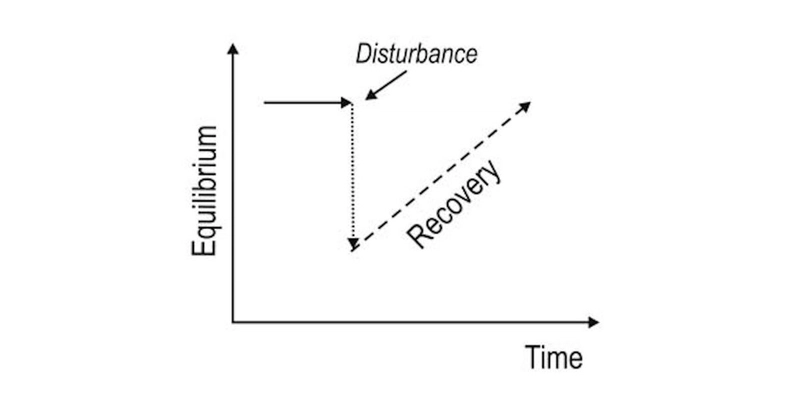How to Build Real-Time Applications with WebTransport: The Successor to WebSockets
WebTransport is a cutting-edge web API that provides low-latency, bidirectional, and secure transport built on top of HTTP/3 and QUIC. It’s designed to replace WebSockets with modern features like multiplexed streams and better congestion control. In this article, you’ll learn how to use WebTransport to create real-time applications with modern browser support. What is WebTransport? WebTransport is a protocol API introduced to allow web clients to communicate with servers over HTTP/3 using unidirectional and bidirectional streams or datagrams. It aims to overcome the limitations of WebSockets and improve upon use cases like multiplayer gaming, live streaming, and IoT messaging. Benefits Over WebSockets Built on HTTP/3: Uses UDP with TLS 1.3 for performance and security. Stream Multiplexing: Multiple independent streams in a single connection. Low Latency: Great for real-time media or game data. Backpressure Support: Prevents buffer overflows and reduces latency spikes. How to Use WebTransport in the Browser Modern versions of Chrome (v97+) support WebTransport behind a flag or fully depending on platform. Here's a basic usage example from the client side: const transport = new WebTransport("https://your-server.com:4433/webtransport"); await transport.ready; const writer = transport.datagrams.writable.getWriter(); const reader = transport.datagrams.readable.getReader(); // Send a message await writer.write(new TextEncoder().encode("Hello Server!")); // Receive messages (async () => { while (true) { const { value, done } = await reader.read(); if (done) break; console.log("Received:", new TextDecoder().decode(value)); } })(); Server-Side: Node.js with QUIC Support WebTransport requires HTTP/3, which is not yet fully supported in Node.js. However, you can use webtransport with Cloudflare Workers, or a reverse proxy like Caddy or NGINX with a custom server behind it. Alternatively, Rust or Go have libraries that already support QUIC/WebTransport. Deploy With Caddy (QUIC/HTTP3) your-domain.com { reverse_proxy localhost:3000 tls your@email.com header { Alt-Svc 'h3=":443"; ma=2592000' } } Use Cases for WebTransport Real-time collaboration tools Live video/audio chat Multiplayer online games IoT command and control interfaces Browser Support As of now, Chrome and Chromium-based browsers are leading adoption. Firefox and Safari are in experimental or planning stages. Check Can I Use for latest compatibility. Conclusion WebTransport is poised to be the next big leap for real-time, low-latency web communication. By combining the best of HTTP/3 and QUIC with a modern API, it solves many of the problems with WebSockets and offers better scaling, performance, and developer control. If this article helped you, consider supporting me: buymeacoffee.com/hexshift

WebTransport is a cutting-edge web API that provides low-latency, bidirectional, and secure transport built on top of HTTP/3 and QUIC. It’s designed to replace WebSockets with modern features like multiplexed streams and better congestion control. In this article, you’ll learn how to use WebTransport to create real-time applications with modern browser support.
What is WebTransport?
WebTransport is a protocol API introduced to allow web clients to communicate with servers over HTTP/3 using unidirectional and bidirectional streams or datagrams. It aims to overcome the limitations of WebSockets and improve upon use cases like multiplayer gaming, live streaming, and IoT messaging.
Benefits Over WebSockets
- Built on HTTP/3: Uses UDP with TLS 1.3 for performance and security.
- Stream Multiplexing: Multiple independent streams in a single connection.
- Low Latency: Great for real-time media or game data.
- Backpressure Support: Prevents buffer overflows and reduces latency spikes.
How to Use WebTransport in the Browser
Modern versions of Chrome (v97+) support WebTransport behind a flag or fully depending on platform. Here's a basic usage example from the client side:
const transport = new WebTransport("https://your-server.com:4433/webtransport");
await transport.ready;
const writer = transport.datagrams.writable.getWriter();
const reader = transport.datagrams.readable.getReader();
// Send a message
await writer.write(new TextEncoder().encode("Hello Server!"));
// Receive messages
(async () => {
while (true) {
const { value, done } = await reader.read();
if (done) break;
console.log("Received:", new TextDecoder().decode(value));
}
})();
Server-Side: Node.js with QUIC Support
WebTransport requires HTTP/3, which is not yet fully supported in Node.js. However, you can use webtransport with Cloudflare Workers, or a reverse proxy like Caddy or NGINX with a custom server behind it.
Alternatively, Rust or Go have libraries that already support QUIC/WebTransport.
Deploy With Caddy (QUIC/HTTP3)
your-domain.com {
reverse_proxy localhost:3000
tls your@email.com
header {
Alt-Svc 'h3=":443"; ma=2592000'
}
}Use Cases for WebTransport
- Real-time collaboration tools
- Live video/audio chat
- Multiplayer online games
- IoT command and control interfaces
Browser Support
As of now, Chrome and Chromium-based browsers are leading adoption. Firefox and Safari are in experimental or planning stages. Check Can I Use for latest compatibility.
Conclusion
WebTransport is poised to be the next big leap for real-time, low-latency web communication. By combining the best of HTTP/3 and QUIC with a modern API, it solves many of the problems with WebSockets and offers better scaling, performance, and developer control.
If this article helped you, consider supporting me: buymeacoffee.com/hexshift





























![[Webinar] AI Is Already Inside Your SaaS Stack — Learn How to Prevent the Next Silent Breach](https://blogger.googleusercontent.com/img/b/R29vZ2xl/AVvXsEiOWn65wd33dg2uO99NrtKbpYLfcepwOLidQDMls0HXKlA91k6HURluRA4WXgJRAZldEe1VReMQZyyYt1PgnoAn5JPpILsWlXIzmrBSs_TBoyPwO7hZrWouBg2-O3mdeoeSGY-l9_bsZB7vbpKjTSvG93zNytjxgTaMPqo9iq9Z5pGa05CJOs9uXpwHFT4/s1600/ai-cyber.jpg?#)










































































































































![[The AI Show Episode 144]: ChatGPT’s New Memory, Shopify CEO’s Leaked “AI First” Memo, Google Cloud Next Releases, o3 and o4-mini Coming Soon & Llama 4’s Rocky Launch](https://www.marketingaiinstitute.com/hubfs/ep%20144%20cover.png)





























































































































![[FREE EBOOKS] Machine Learning Hero, AI-Assisted Programming for Web and Machine Learning & Four More Best Selling Titles](https://www.javacodegeeks.com/wp-content/uploads/2012/12/jcg-logo.jpg)








































































![Rogue Company Elite tier list of best characters [April 2025]](https://media.pocketgamer.com/artwork/na-33136-1657102075/rogue-company-ios-android-tier-cover.jpg?#)








































































_Andreas_Prott_Alamy.jpg?width=1280&auto=webp&quality=80&disable=upscale#)






























































































![What’s new in Android’s April 2025 Google System Updates [U: 4/18]](https://i0.wp.com/9to5google.com/wp-content/uploads/sites/4/2025/01/google-play-services-3.jpg?resize=1200%2C628&quality=82&strip=all&ssl=1)










![Apple Watch Series 10 Back On Sale for $299! [Lowest Price Ever]](https://www.iclarified.com/images/news/96657/96657/96657-640.jpg)
![EU Postpones Apple App Store Fines Amid Tariff Negotiations [Report]](https://www.iclarified.com/images/news/97068/97068/97068-640.jpg)
![Apple Slips to Fifth in China's Smartphone Market with 9% Decline [Report]](https://www.iclarified.com/images/news/97065/97065/97065-640.jpg)




































































































































